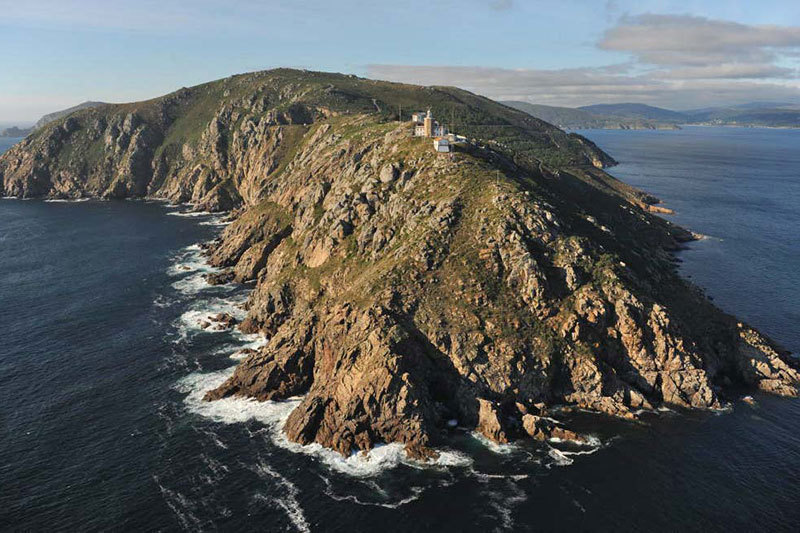We are facing one of the best views of the Coast of Death, where travelers from all corners of the world come to enjoy this unique scenery.
Until less than a thousand years ago people believed that this place was the edge of the known world. Beyond there was nothing, just sea. If any, monstrous beasts that lived there, where the ocean ended and devoured anyone who dared to sail the "Mare Tenebrosum." Fortunately these ideas disappeared completely with the passage of time, but still, today this place is surrounded by mystery, legends and beliefs that make it a place that carries a good load of mysticism. This is the Finisterre Cape: the viewpoint at the end of the world.
Finisterre Cape is a peninsula that penetrates 3 kilometers in the sea of the Coast of Death. The tip is a rising cliff from the dreaded islets of O Petonciño and O Centolo to Facho Mountain(242 meters) where it seems that the Ara Solis of antiquity was for the celebration of solar rites.
Its location is of singular relevance, since from here, from where we are looking to the right, left or front, everything you see is sea. Not in vain, Finisterre (or Fisterra) is the westernmost point of Europe, that is why, since antiquity, this place was considered the end of the Earth, or finis terrae, as the Romans named it. Today, in a way, Finisterre Cape remains for many the end of something, the end of a path, a journey, both physical and spiritual.
The town of Finisterre, a name from the Latin finis terrae, captivated from ancient times a multitude of people who longed to look out at the end of the world, where the earth ends and the sea begins, or at least so the Roman legions believed in contemplating the sinking Of the sun in its waters.
Ancient Greco-Roman geographers locate here the Promontorium Nerium and the Ara Solis, the altar of worship to the sun, built by the Phoenicians and which the Apostle James did destroy soon.
The singularity of Finisterre arises from the many legends that envelop these lands, in which religious, maritime and stone elements are intertwined. Thanks to the memory of the people of this place, these legends are still alive, captivating, along with the wonderful views that Finisterre has, anyone who comes to visit the End of the World.
Finisterre is formed by an old nucleus grown in amphitheater on the port. Its houses and narrow streets are of a great traditionalism and originality. In the center is the Plaza of Ara Solis, on the outskirts, on the way to the lighthouse, we find the most interesting monument of the town: the Church of Santa Maria de las Areas and within the historical complex of the town, Also highlights the Castle of San Carlos
Its port is the largest place of activity of the town and its market, Galicia's first tourist market. The fleet consists of small inshore boats that use various fishing gear such as longline, pots, betas, etc.
At any time of the day we stroll through the port, we find sailors who go or come to fish, repairing their nets or in the fish auction market.
The fishing sector is one of the most traditional of the town.

